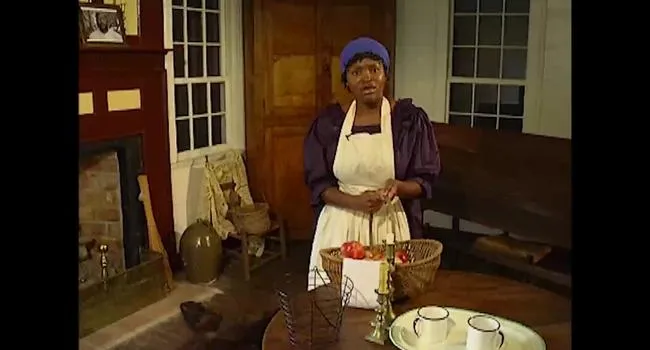The program begins with Vesey discussing the condition of slavery with an acquaintance who is a slave. Later, at a meeting, details of a plot are worked out with co-conspirators. Some are concerned and dismayed that the plot calls for the annihilation of the white population. At a chance meeting between two slaves, William, also a co-conspirator, informs Devany of the plot and asks him to participate. Devany is reticent and visits his friend, Pensel, a free Negro, and asks for his advice. Pinsel advises Devany to steer clear of the conspiracy and to inform his master, Colonel Prioleau, about what he knows. Devany does so and in turn the authorities are informed.
While some initial questions turned up no proof, the conspiracy begins to fall apart. Efforts by Vesey to execute the plan sooner, prove to be unsuccessful and the rebellion was squelched. Arrests and trials result in Vesey and 35 others being hanged. The impact of the plot was that a real fear of slave uprisings engulfed the people of Charleston. This had an effect on lives for years to come. In addition, it gave encouragement to future uprisings elsewhere such as the famed Nat Turner rebellion in Virginia in 1837.
Standards
- 4.3.CX Contextualize South Carolina’s role in the development of sectionalism during the antebellum period.
- 4.4.CO Compare the economic and political causes of the Civil War.
- 8.3.CO Compare the debates between South Carolina and the federal government regarding slavery, federalism, and the Constitution.
- This indicator was developed to encourage inquiry into the debates, heightened by Westward Expansion, over federal and state power concerning slavery, and the government's role in protecting and securing natural rights.
- 8.3.CC Analyze debates and efforts to recognize the natural rights of marginalized groups during the period of expansion and sectionalism.
- This indicator was designed to encourage inquiry into the continuities and changes of the experiences of marginalized groups such as African Americans, Native Americans and women, as the U.S. expanded westward and grappled with the development of new states.
- USHC.2.CO Compare the economic, political, and social, development of the antebellum North and South from 1803–1860 using a comparative analysis.
Resources
You need to be logged in to listen to view this content. Create an account now; it's quick, easy, and free!
Log In to View












